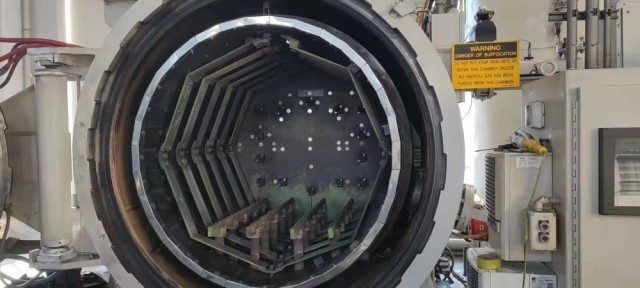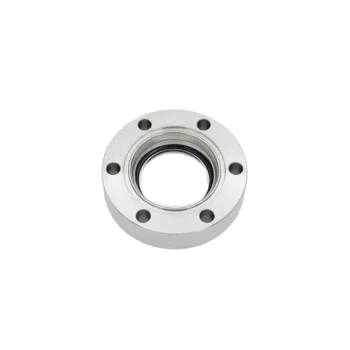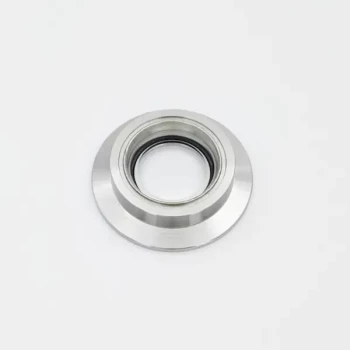전기적 고장
온도 이상
진공 용광로의 온도 이상은 고온 경보 또는 시스템이 설정 온도 값에 도달하지 못하는 것으로 나타날 수 있습니다. 이러한 문제는 퍼니스의 작동과 효율을 크게 방해하여 잠재적인 생산 지연과 유지보수 비용 증가로 이어질 수 있습니다.
고온 알람을 해결하려면 온도 조절기의 정확성과 기능을 검증하는 것이 중요합니다. 여기에는 온도 조절기 파라미터를 보정하여 올바르게 설정되고 온도 변화에 적절하게 반응하는지 확인하는 작업이 포함됩니다. 또한 솔리드 스테이트 릴레이 출력을 검사하는 것도 필수입니다. 솔리드 스테이트 릴레이가 오작동하면 온도 제어가 불규칙해져 잘못된 경보가 발생할 수 있습니다. 이러한 부품을 정기적으로 유지보수하고 테스트하면 이러한 문제를 예방할 수 있습니다.
반면에 퍼니스가 원하는 온도에 도달하지 못하면 열전대 프로브를 철저히 점검해야 합니다. 열전대는 퍼니스 내의 실제 온도를 측정하는 데 매우 중요합니다. 열전대가 손상되었거나 부적절하게 보정된 경우 부정확한 판독값을 제공하여 온도 제어가 비효율적으로 이루어질 수 있습니다. 열전대 프로브를 교체하거나 재보정하면 이 문제를 해결하고 정확한 온도 조절을 보장할 수 있습니다.
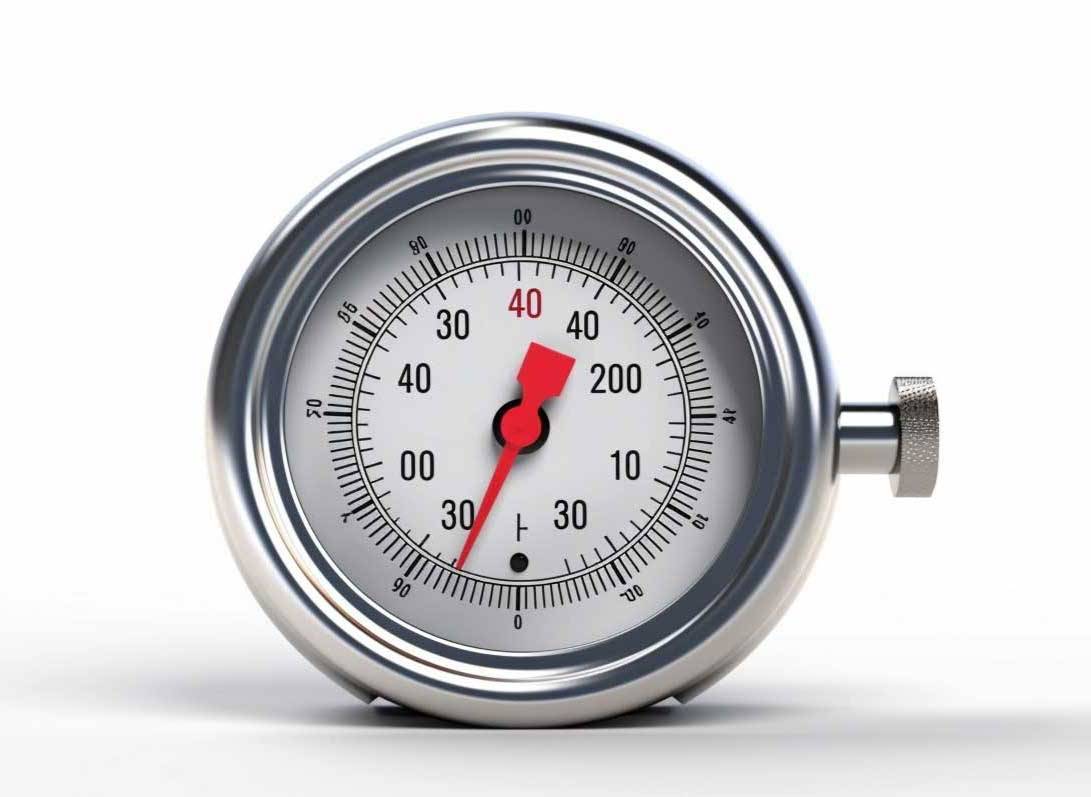
요약하면, 진공로에서 정확한 온도 제어를 유지하려면 온도 이상을 진단하고 해결하기 위한 체계적인 접근 방식이 필요합니다. 온도 조절기 파라미터, 솔리드 스테이트 릴레이 출력 및 열전대 프로브에 집중함으로써 작업자는 퍼니스가 효율적이고 효과적으로 작동하도록 보장할 수 있습니다.
진공 이상
퍼니스의 진공 이상은 성능과 효율성에 큰 영향을 미칠 수 있습니다. 이러한 문제는 일반적으로 진공 펌핑 불량 또는 낮은 진공 수준으로 나타나며, 이는 최적의 처리 조건이 아닌 상태로 이어질 수 있습니다. 이러한 문제를 해결하려면 근본적인 원인을 파악하고 해결하기 위한 체계적인 접근 방식이 필요합니다.
진공 이상 문제 해결의 첫 번째 단계 중 하나는 공기 공급원을 검사하는 것입니다. 공기 공급이 깨끗하고 오염 물질이 없는지 확인하면 진공 시스템의 막힘을 방지할 수 있습니다. 또한 진공 게이지의 정확도와 보정 여부를 확인해야 합니다. 잘못 보정된 게이지는 작업자를 오도하여 잘못된 조정과 지속적인 문제로 이어질 수 있습니다.
도어 씰의 무결성도 또 다른 중요한 요소입니다. 도어 씰에 결함이 있으면 공기가 챔버로 누출되어 진공 레벨이 손상될 수 있습니다. 씰링 테이프의 상태와 도어 플레이트의 정렬 상태를 확인하는 등 도어 씰을 정기적으로 검사하고 유지 관리하는 것은 필수 예방 조치입니다.
마지막으로 배관 시스템에 마모나 손상 징후가 있는지 검사해야 합니다. 손상되거나 제대로 연결되지 않은 배관은 공기 누출을 유발하여 전반적인 진공 효율을 떨어뜨릴 수 있습니다. 모든 연결부가 단단히 고정되어 있는지, 눈에 보이는 균열이나 구멍이 없는지 확인하면 최적의 진공 수준을 유지하는 데 도움이 될 수 있습니다.
공기 공급원, 진공 게이지, 도어 씰, 배관 등 이러한 영역을 체계적으로 관리함으로써 운영자는 진공 이상 문제를 효과적으로 해결하고 진공로의 원활한 작동을 보장할 수 있습니다.
기계 구조 고장
도어 문제
진공로를 다룰 때 가장 흔한 기계 구조 고장 중 하나는 도어가 제대로 밀봉되지 않는 것과 관련이 있습니다. 이 문제는 심각한 운영 비효율성과 잠재적인 안전 위험으로 이어질 수 있습니다. 이 문제에 대한 주요 해결책은 몇 가지 주요 구성 요소를 철저히 검사하는 것입니다.
첫째, 도어 힌지 마모 또는 정렬 불량 징후가 있는지 검사해야 합니다. 도어가 균일하고 안전하게 닫히도록 하려면 경첩을 올바르게 정렬하는 것이 중요합니다. 경첩이 마모되었거나 느슨한 경우 적절한 기능을 회복하려면 경첩을 조이거나 교체해야 할 수 있습니다.
다음, 풀 버클 은 도어의 효과적인 밀폐 기능에 중요한 역할을 합니다. 이 버클은 도어를 제자리에 고정하는 데 도움이 되며, 오작동이 발생하면 도어가 제대로 밀봉되지 않을 수 있습니다. 풀 버클이 올바르게 작동하는지, 막히거나 손상되지 않았는지 확인하는 것이 중요합니다.
실링 테이프 도 반드시 점검해야 하는 또 다른 중요한 부품입니다. 시간이 지남에 따라 밀봉 테이프의 성능이 저하되거나 정렬이 잘못되어 누출이 발생할 수 있습니다. 밀봉 테이프의 상태와 정렬을 정기적으로 점검하면 이 문제를 예방할 수 있습니다. 테이프가 마모되었거나 손상된 경우 즉시 교체하여 단단히 밀봉해야 합니다.
마지막으로 도어 플레이트 자체에 변형이나 손상이 있는지 검사해야 합니다. 도어 플레이트에 불규칙한 부분이 있으면 제대로 밀봉하는 데 영향을 미칠 수 있습니다. 도어 플레이트의 상태가 양호하고 올바르게 정렬되어 있는지 확인하는 것은 효과적인 밀봉을 유지하는 데 필수적입니다.
이러한 구성 요소를 체계적으로 점검함으로써 작업자는 도어가 제대로 밀봉되지 않는 문제를 해결하고 해결하여 진공로의 효율성과 안전성을 유지할 수 있습니다.
팬 오작동
팬에서 이상한 소리가 나면 진공로 내부의 잠재적 오작동을 조기에 알릴 수 있습니다. 종종 갈리는 소리, 덜거덕거리는 소리, 윙윙거리는 소리로 묘사되는 이러한 소음은 다양한 문제에서 비롯될 수 있으며, 방치할 경우 더 심각한 작동 문제로 이어질 수 있습니다.
이러한 소리의 주요 원인 중 하나는 팬 어셈블리 내부에 이물질이 있는 경우입니다. 시간이 지남에 따라 먼지, 금속 부스러기 또는 기타 이물질이 쌓여 팬 블레이드나 하우징에 끼어 있을 수 있습니다. 이러한 침입으로 인해 팬이 고르지 않게 작동하여 특유의 이상한 소음이 발생할 수 있습니다. 이물질 제거를 포함한 정기적인 점검과 유지보수는 이러한 문제를 예방하는 데 매우 중요합니다.
팬 관련 소음의 또 다른 일반적인 원인은 모터 나사가 느슨한 경우입니다. 용광로 내부의 지속적인 진동과 움직임으로 인해 시간이 지남에 따라 나사가 빠지거나 느슨해질 수 있습니다. 나사가 느슨해지면 팬이 회전할 때 덜거덕거리는 소리가 발생하여 즉각적인 조치가 필요하다는 신호가 될 수 있습니다. 이러한 나사를 조이면 문제가 해결되는 경우가 많지만 향후 발생을 방지하기 위해 모든 부품이 단단히 고정되어 있는지 확인하는 것이 중요합니다.
| 문제 | 가능한 원인 | 해결 방법 |
|---|---|---|
| 이상한 소음 | 팬 내부의 이물질 | 이물질을 제거하고 어셈블리를 청소하세요. |
| 느슨한 모터 나사 | 모든 나사를 조이고 부품을 고정합니다. |
이러한 팬 오작동을 즉시 해결하는 것은 진공로의 효율성과 수명을 유지하는 데 매우 중요합니다. 철저한 점검과 필요한 조정을 포함하는 정기적인 유지보수 일정은 사소한 문제가 더 큰 문제로 확대되는 것을 방지하는 데 도움이 될 수 있습니다.
공압 밸브 고장
진공로의 공압 밸브 고장은 운영을 중단시키고 심각한 다운타임으로 이어질 수 있습니다. 이러한 고장은 종종 밸브가 필요에 따라 열리거나 닫히지 않아 원하는 진공 수준과 공정 조건을 유지하는 시스템의 능력에 영향을 미치는 형태로 나타납니다.
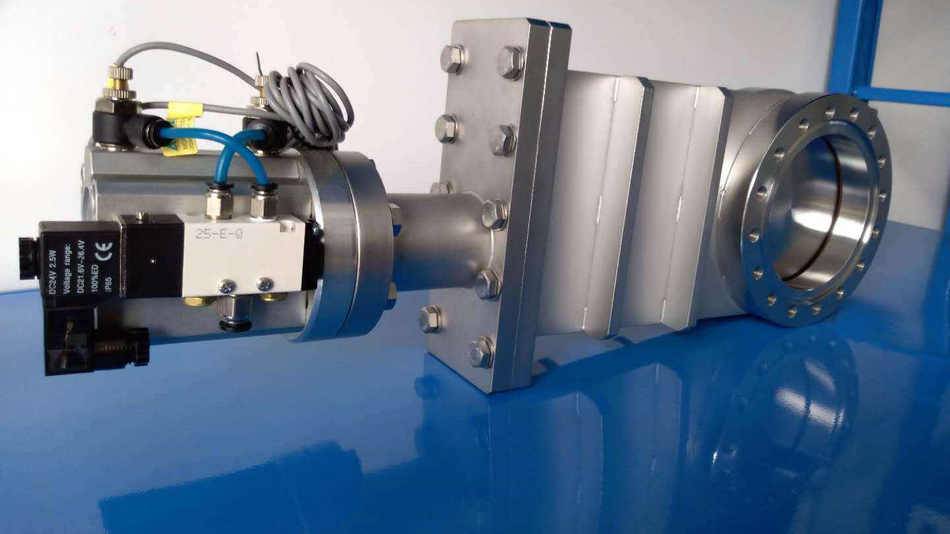
이러한 문제를 진단하고 해결하려면 기술자는 먼저 솔레노이드 밸브를 검사해야 합니다. 이 밸브는 압축 공기의 흐름을 제어하는 중요한 구성 요소로, 오작동이 발생하면 전체 공압 시스템이 작동하지 않을 수 있습니다. 일반적인 문제로는 솔레노이드가 끼이거나 손상되어 청소, 수리 또는 교체가 필요할 수 있는 경우가 있습니다.
또한 압축 공기 공급의 적절한 압력을 유지하는 것도 중요합니다. 압력이 불충분하거나 과도하면 밸브가 제대로 작동하지 않을 수 있습니다. 공기압을 정기적으로 점검 및 조정하고 공기 압축기 및 관련 배관을 유지 관리하면 많은 일반적인 공압 밸브 고장을 예방할 수 있습니다.
요약하면, 공압 밸브 고장을 해결하려면 솔레노이드 밸브를 철저히 검사하고 압축 공기 압력이 지정된 범위 내에 있는지 확인하는 것부터 시작하여 체계적인 접근 방식이 필요합니다.
관련 제품
- 실험실 규모 진공 유도 용해로
- 진공 열처리 소결 브레이징로
- 몰리브덴 진공 열처리로
- 진공 열간 프레스 퍼니스 기계 가열 진공 프레스
- 고온 응용 분야를 위한 진공 열처리 및 압력 소결로
